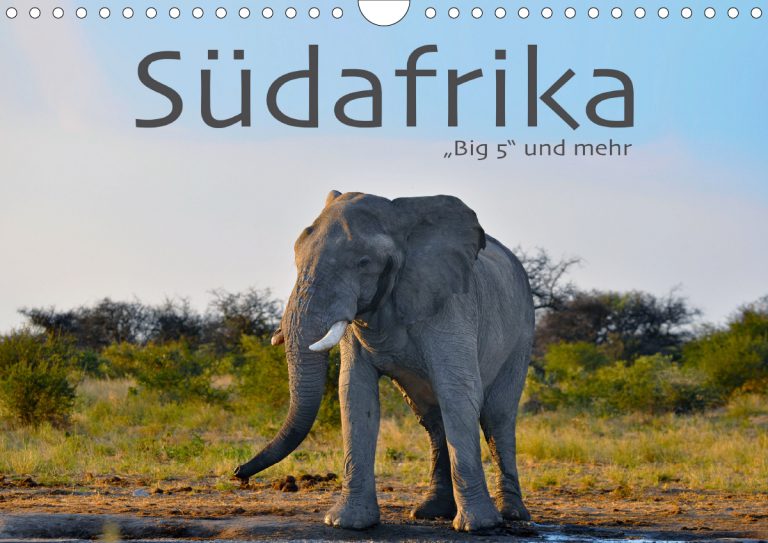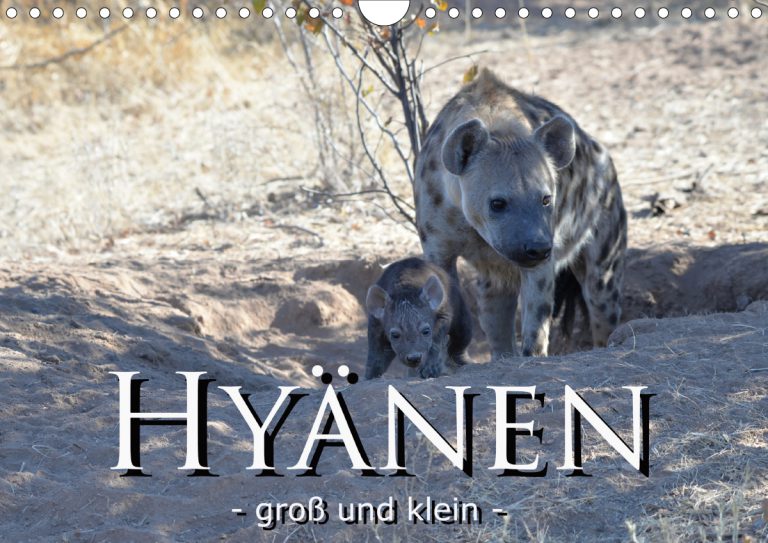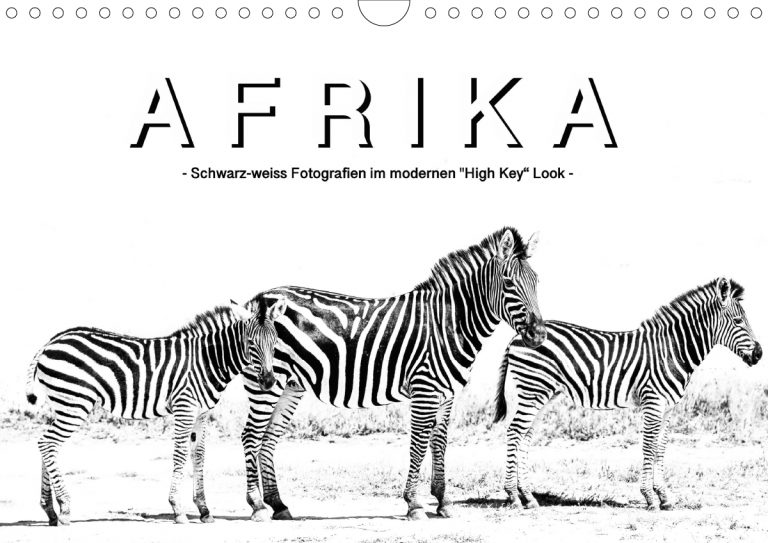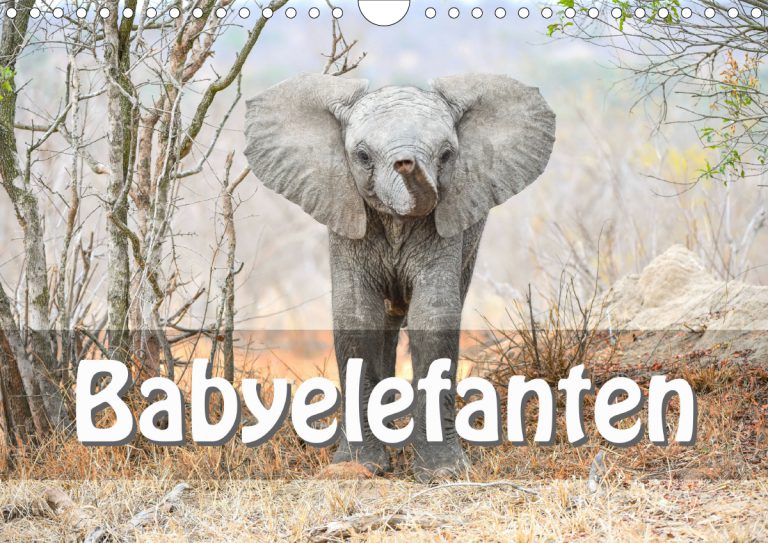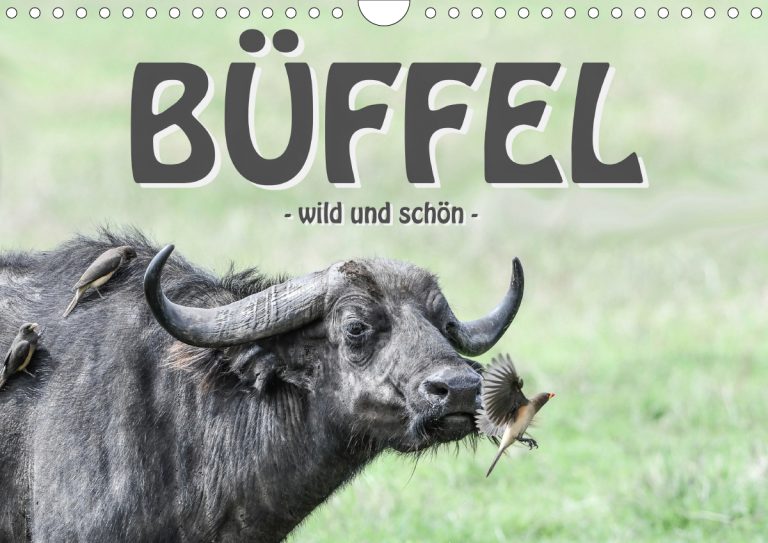Travel report Uganda - 7-day fly-in safari including gorilla trekking
Experience Uganda, one of the last true African adventures
Uganda, the “Pearl of Africa,” fascinates visitors with its untouched nature, impressive wildlife, and unique culture. In this travel report, we take you on an exciting journey through the land of mountains and rainforests. From the impressive Bwindi Impenetrable Forest, where you can observe gorillas in the wild, to the majestic Murchison Falls, Uganda offers unforgettable experiences for nature lovers and adventurers alike. Immerse yourself in the diversity of this unique destination and discover why Uganda is one of Africa’s undiscovered gems.
Where is Uganda and what was our itinerary?
Important things to consider
Local currencies: Ugandan shillings, but US dollars are also widely accepted. Bring small USD bills for tips. Money can be easily withdrawn from any ATM. Otherwise, credit cards are accepted everywhere.
Vaccinations: The yellow fever vaccination is mandatory, and all standard vaccinations are also recommended (see recommendations from the State Department). Malaria prophylaxis should definitely be taken all year round, but of course everyone must decide for themselves.
Luggage: Photo equipment should definitely be taken on board, so pay attention to cabin luggage dimensions (!). For a flying safari, pay attention to bag restrictions and weight limits.
Clothing: The best option is to dress in layers, with functional clothing and sturdy shoes. For gorilla trekking, sturdy gloves and gaiters are also recommended.
In lodges in Africa, you can usually have your clothes washed for free or for a small fee. You often get them back the same day. This saves a lot of luggage space. However, in Uganda, the humidity is so high that clothes often do not dry properly.
Travelling to Uganda
You can travel from Germany via Brussels with SN Brussels or Amsterdam with KLM. There are also options with Turkish Airlines via Istanbul or Egypt Air via Cairo. However, we would not recommend these, as there is no real business class, even if you pay for it. But if that doesn’t matter to you, these are definitely alternatives.
On the way from Europe to Uganda, the planes usually make a short stop in Rwanda to let people on and off. You can remain seated on the plane during this stop, which is convenient. The flight time is a good 9 hours with a stopover, and if you add the connecting flights, for example from Munich, and the waiting times, you end up traveling for a good 15 hours at the end of the day. However, it can quickly turn into 18 hours, as was the case for us, if the flights are delayed.
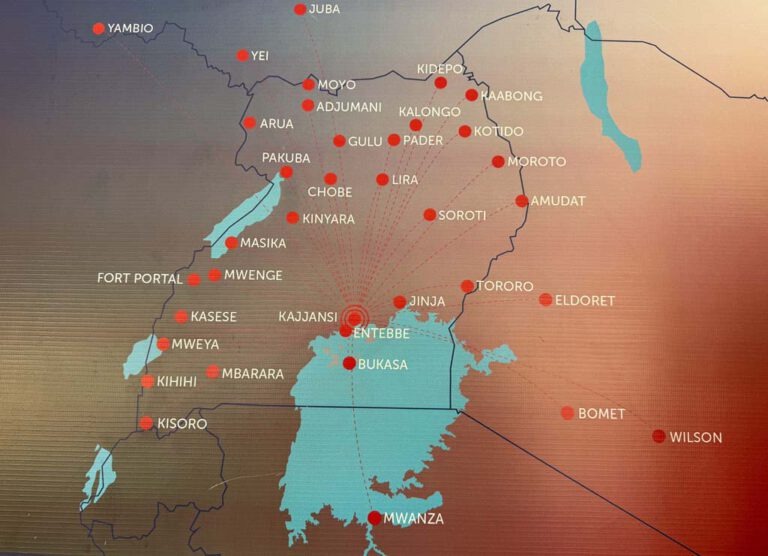
Flying within Uganda
We decided on a flying safari because the roads in Uganda are often very poor and, if you only have a week anyway, you can save a lot of travel time and spend more time in the lodges. We booked a combination of private plane and shared shuttle. For the route from Entebbe to Bugungu (Murchison Falls airstrip) and on to Kasese (Queen Elizabeth National Park), we flew with Aeropeak Safari (https://aeropeaksafari.com/). From Kasese to Bugungu (Bwindi Impenetrable Forest – gorilla trekking) and on to Entebbe, we flew with AeroLink (https://www.aerolinkuganda.com/). We can highly recommend both.
Entebbe - Protea Hotel
Entebbe, where the international airport is located, is the gateway to Uganda for most people, but not necessarily a place where you stay for long. We chose the Protea Entebbe Hotel and can definitely recommend it. It looks much better in real life than in the pictures. The rooms are large and spacious. There is an outdoor pool area and the breakfast is really excellent. It is also the hotel of choice for most airline crews, which speaks for its quality.
The hotel is located directly on Lake Victoria, the second largest freshwater lake in the world, so you have an unforgettable view as soon as you get up in the morning.
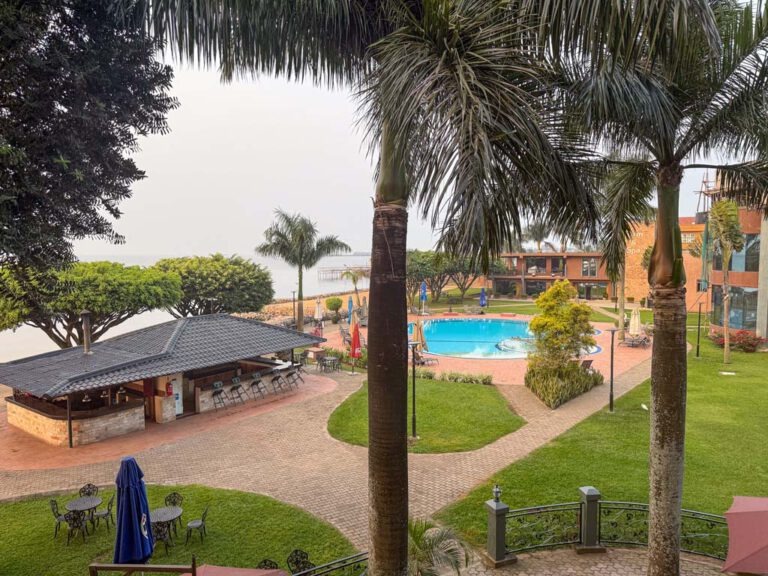
Shoebill Tour - Entebbe
The shoebills live in the marshes around Lake Victoria. We are somewhat wary of the lake, as there is a high risk of schistosomiasis there. These are parasites that are transmitted through the water. It is therefore best to avoid contact with them as much as possible, which is of course difficult when you are on a boat trip. We have therefore opted for long pants and long-sleeved shirts and try to protect our bare skin as much as possible.
The tour begins with a 45-minute transfer in a wooden boat with an outboard motor to the marshland where you can observe the shoebills. There, you transfer to a smaller wooden boat, which also has a small motor but can be pushed through the reeds by hand if necessary. Getting so close to such a large and powerful bird in the wild is a real highlight. Be sure to bring good sunscreen and mosquito repellent if necessary, and make sure to start the tour early in the morning. That’s when you have the best chance of seeing them.
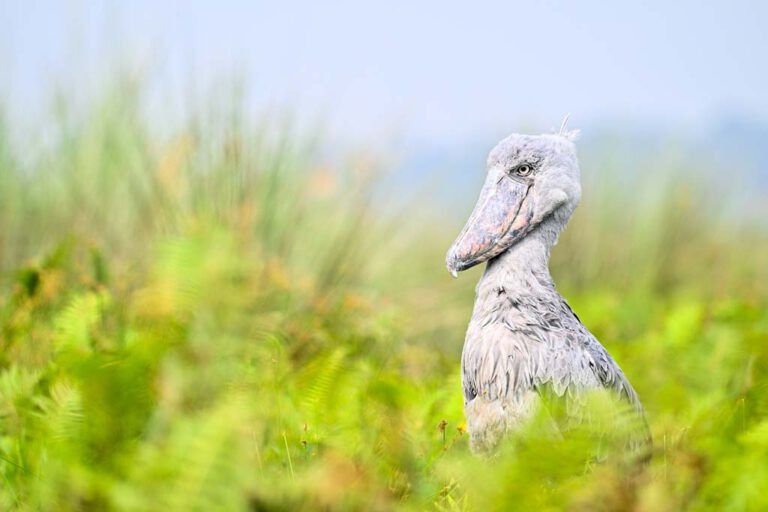
Flying to Murchison Falls to Papa's Camp
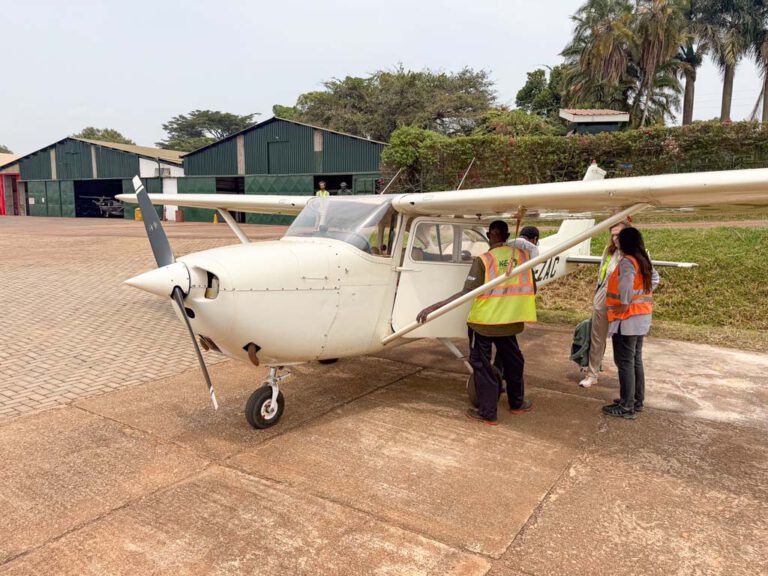
Our next destination is Murchison Falls. Since we only have a week to travel, we decided to fly there from Entebbe. We are driven directly from the shoe-snout tour to the airport, which is about 40 km away. From there, we continue in a four-seater Cessna that we booked exclusively for ourselves. On board are our pilot James, Andrea, and me. Depending on wind and weather conditions, the flight takes between one and a half and two hours. We made it in 1 hour 30 minutes because we had favorable wind conditions. When flying in such a small aircraft, you need to know that you either need good noise-canceling headphones or, as in our case, they are automatically provided on board. Your ears will thank you for it. You should also remember that it gets very, very warm in these small planes, so you shouldn’t dress too warmly. Those who have problems with turbulence in an airplane are also advised to take a travel sickness tablet.
Arriving at Papa's Camp
After landing, it takes about an hour and a half by car from the airport to the camp. Since we took off at noon and didn’t land until 2:00 p.m., we decided to use the drive to the camp as our first safari drive. On this drive alone, we had some incredible experiences and animal sightings. Starting with the Uganda kobs, a special species of antelope, to herds of buffalo, to lions sitting in the trees, we really saw everything. And when we say everything, we unfortunately also mean swarms of tsetse flies, which can bite very unpleasantly and could also transmit the incurable sleeping sickness. According to our guide, the flies in this park do not carry the pathogens, but of course we have no way of verifying this. That’s why it makes you feel very uneasy when the windows are full of flies and you have to check several times to make sure that all the windows and doors of the vehicle are really closed.
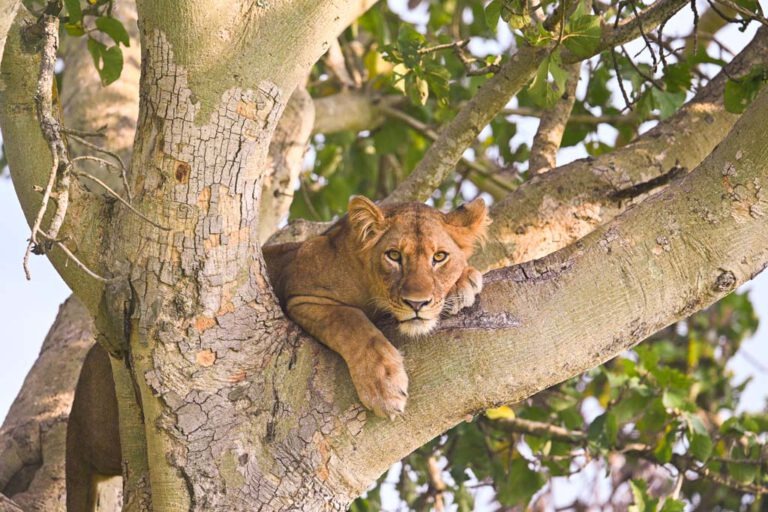
Papa's Camp
Papa’s Camp is one of the newest camps in the park and has only five tents, each for two people, making it very exclusive. The hosts, Markus and Steffi, are German and their hospitality is simply unbeatable. The camp is located directly on the Nile and the Nile is less than 10 meters away from our tent entrance. The fire pit is designed so that you can enjoy your first drink upon arrival with a view of the Nile and the hippos living in it. An incredible experience. Right behind it is the main tent, where meals are served. Everything is very cozy and very personally furnished.
Tents at Papa's Camp
The tents in the camp are all located directly on the Nile with a great view of the rapids and accompanying background noise, which is not disturbing at all as it is a steady loud murmur. The tents themselves are furnished in a beautiful colonial style and from the very first moment you get a romantic feeling of being back in the old days of original safaris. Everything is functional. There are power outlets, adequate lighting, a fan in case it gets too hot, and an en-suite bathroom with an outdoor shower. In addition, although it is a tent, there is also a mosquito net over the bed, which gives you a feeling of security and allows you to sleep well in the really comfortable beds.
You are taken to and from the tents in the dark. During the day, you can walk yourself.
You realize that you are truly in the deepest and wildest part of Africa when you want to take a shower. As mentioned, the shower is an outdoor shower, and if you want hot water, you have to let them know 20 minutes in advance, and then it is brought to your tent by hand. However, you shouldn’t expect a particularly long or powerful shower, but that’s not a problem.
The view from the tents is absolutely incredible. You feel like you’re lying right on the Nile, and when you see how fast the water is flowing, you know that you definitely don’t want to fall in.
Food at Papa's Camp
Lunch and dinner are served as three-course meals, and you always have the choice between fish, meat, or a vegetarian option. The portions are generous and the food is truly excellent.
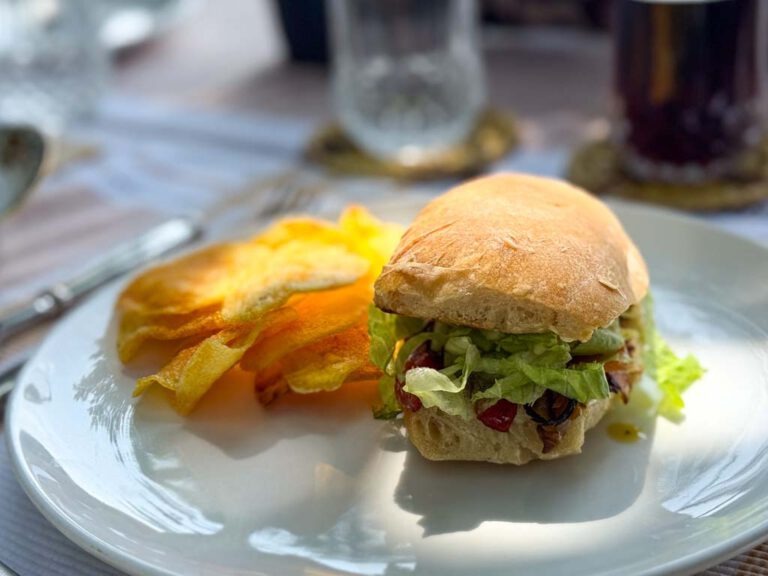
Game Drives at Papa's Camp
The morning safari departs at 5:45 a.m. It’s up to you when you want to get up. However, you have to specify when you want to be picked up. The special feature is that you can also specify when you would like to have coffee or tea. We had our coffee brought to us at 5:15 a.m. so that we could enjoy our first cup as soon as we got up. The guide arrives punctually to pick you up for the safari.
Different. Unlike what we had experienced in Africa before, this camp starts so early so that it is still dark when you have to go through the tsetse fly-infested bushes and forests. This is because the flies are still “asleep” at this time of day. Once you arrive on the wide plain, the flies are no longer a problem.
In August, the landscape is green and the grass is up to 1.50 m high, which doesn’t necessarily make it easy to spot animals, but contributes to a beautiful landscape. Thousands of Uganda kobs, which resemble South African impalas, can be seen here. They are truly beautiful animals. But you can also see lions in trees, huge herds of buffalo, waterbucks, warthogs, and much more.
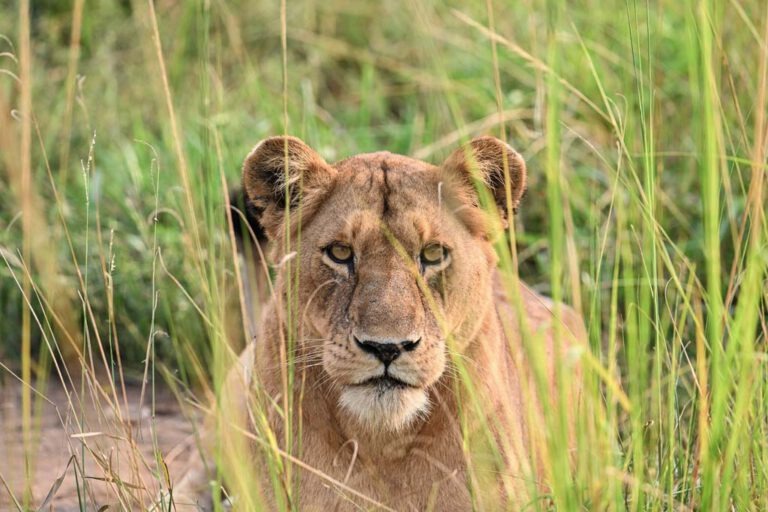
Breakfast is served either at the camp itself or, as in our case, during the game drive. It doesn’t get much more romantic than being served a so-called Rolex in the middle of Uganda with two chairs, a small set table, your own personal chef, and your own personal waiter. Accompanied by freshly brewed coffee, muffins, and other small pastries.
The camp has two different safari vehicles, or variants: the closed Land Cruiser and the open Land Rover Defender. We opted for the open Land Rover Defender because it is much better for taking photos. However, we must also say that we had a healthy respect for the tsetse flies.
In the afternoon, the game drive starts between 4:30 p.m. and 5:00 p.m., depending on the season. This is much later than what you would expect in other African countries. For Uganda, this is perfectly fine, as you still have the particularly beautiful light and at the same time have no problems on the way back through the infested fly areas, as the flies “sleep” in the dark, as mentioned above.
Before heading back to camp, of course, you can’t miss the bush sundowner, which is also something very special here at this camp.
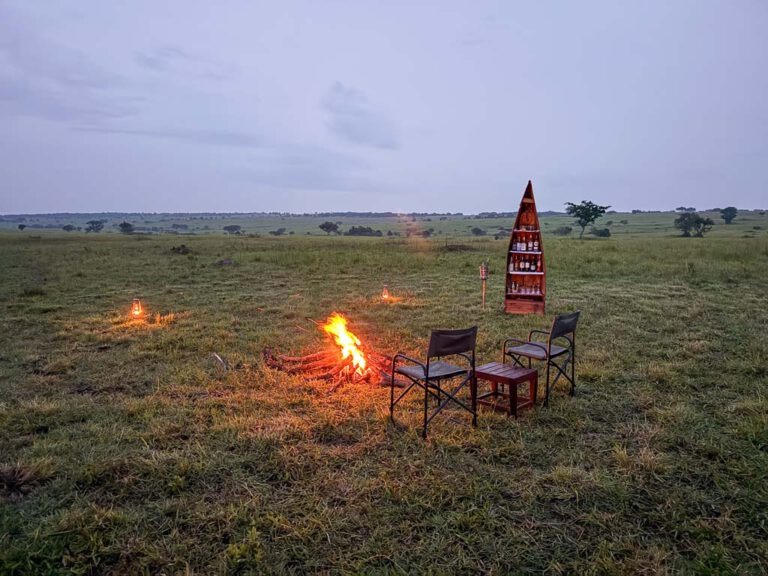
Visiting Murchison Falls
After leaving Papa’s Camp and heading for Bugungu Airstrip, we made one last detour to Murchison Falls. Murchison Falls, one of Uganda’s most spectacular natural wonders, offers an unforgettable experience for adventure seekers and nature lovers. The mighty Victoria Nile plunges through a narrow gorge here, forming an impressive waterfall that is one of the largest and most famous in the country.
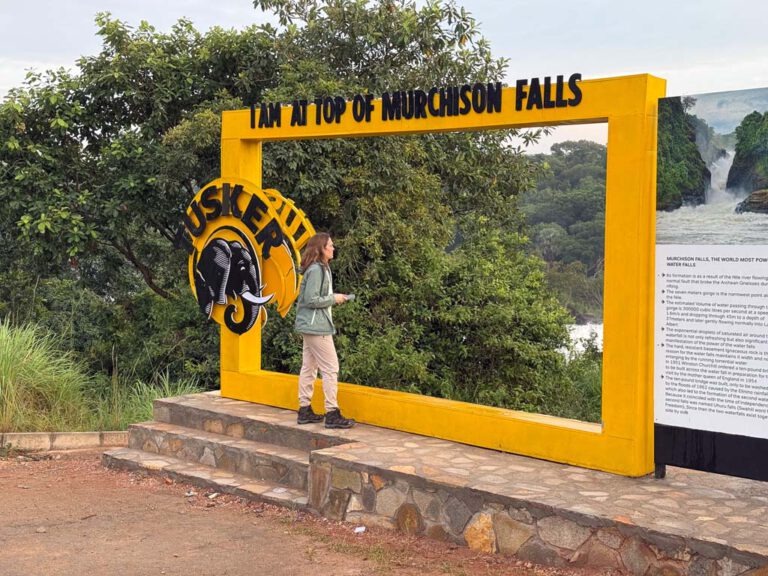
Onward flight from Bugungu Airstrip (Murchison Falls) to Kasese and from there to Honeyguide Bushcamp
The flight from Bugungu to Kasese also takes about 1.5-2 hours, and the airstrip in Kasese is a grass runway. The flight itself is very scenic, as you fly past lakes and mountains. Our pilot James also had a very special surprise for us, as he took us on a tour over Murchison Falls, which was another highlight.
Queen Elizabeth National Park and Honeybear Bushcamp
Honeybear Bushcamp is located in a private concession right next to Queen Elizabeth National Park, separated by the Kazinga Channel. Our driver is already waiting at the airport, and it takes about 45-60 minutes to get from the airport to the pick-up point. The pick-up point is the transfer point where you switch from the car to a boat, as the last quarter of an hour to the camp is a boat trip. This is a very special experience, as you reach the camp from the water.
The welcome is warm, as is the entire staff, who are already standing at the jetty and greet us with singing and dancing. Phillip and Kara are the general managers of this lodge and also give us a warm welcome.
Honeybear Bush Camp
Like Papa’s Camp, this camp belongs to the Wildplaces group and is structured exactly like the previous camp. However, this camp is located in a less densely wooded area, but also directly on the river. This makes it much brighter and allows you to observe the animals right in front of your tent.
The main tent is again decorated in a very African style and exudes comfort. It is a great place to relax and the only place in the camp where you can get Wi-Fi reception.
Tents at Honeybear Bush Camp
The tents are also identical to those at Papa’s Camp, i.e., there is a main tent, which is large enough, an adjoining bathroom area with an indoor toilet, and the familiar outdoor shower.
We have tent number four, which has an excellent location in the camp, as you can see the pond with the water lilies on one side and the river on the other. The location is special because either hippos or buffalo or other animals lie and rest right in front of the tent, so you have “pure wildlife” practically all day long.
You have to be taken to and from the tent at night. During the day it’s no problem, but you should still be careful and always check that there are no animals nearby.
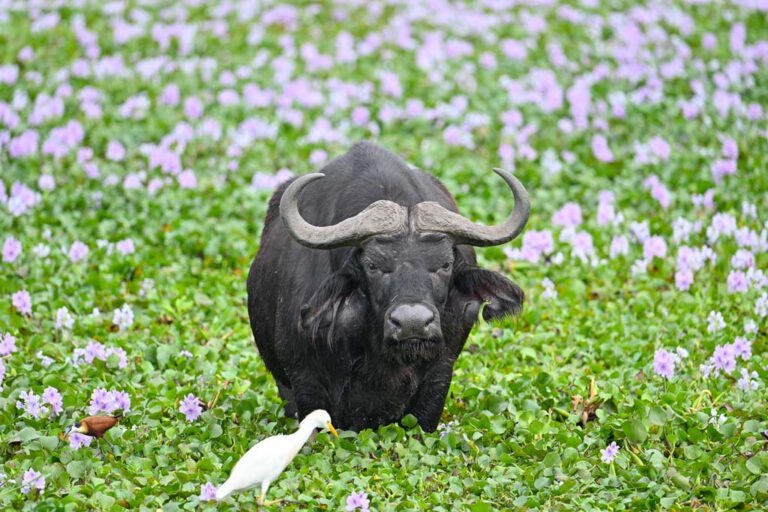
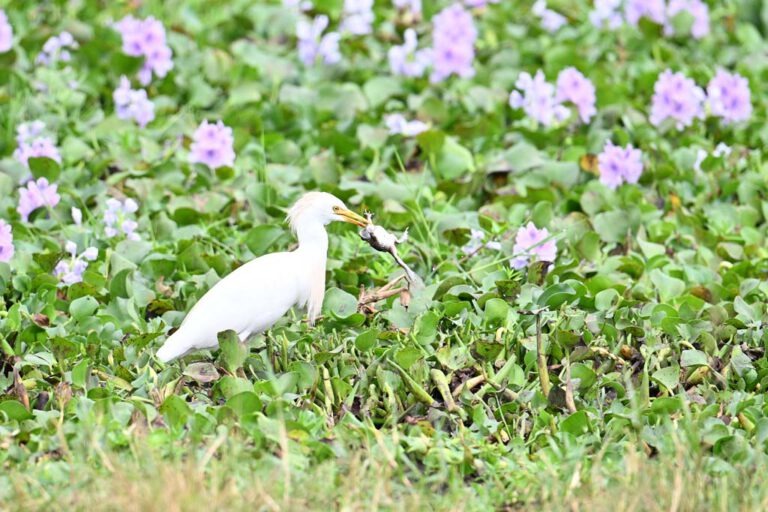
Food at Honeybear Bush Camp
The food at the camp is top notch—everything tastes great and what’s on offer is really high quality. What’s more, the head chef here is a true genius. Everything tastes absolutely delicious.
There are three main meals a day, but you can order snacks or drinks in between as you wish. There’s no danger of losing weight here at this camp.
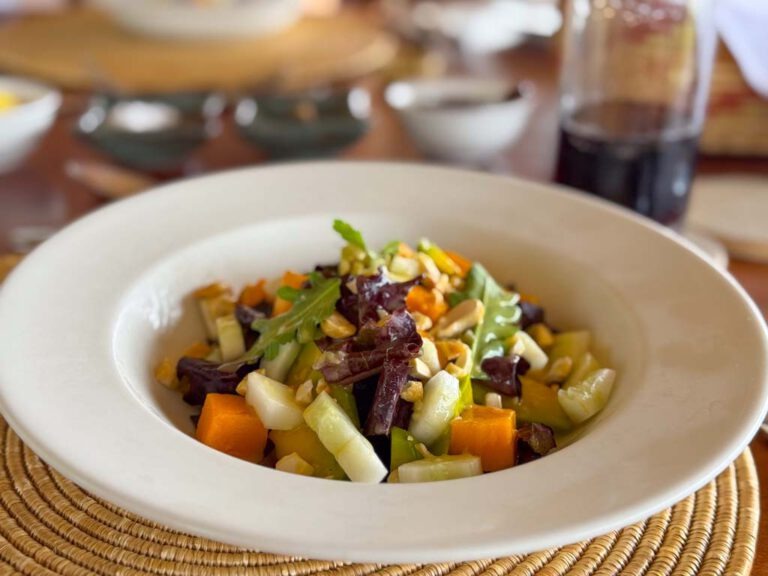
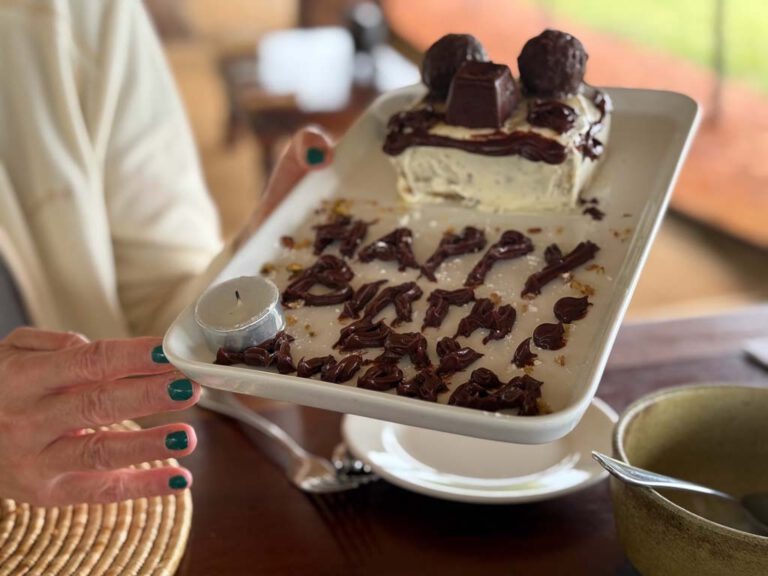
Game Drives at Honeybear Bush Camp
At this camp, you have the option of choosing whether you want to go on safari drives by boat or by vehicle. We did both and can highly recommend both. The morning drive starts at 6:30 a.m. Coffee is served from 6:00 a.m. The afternoon drive starts at 4:30 p.m. and coffee is served from 4:00 p.m. The boat trips are very special, as you have a great view of the shore from the water. The density of wildlife is phenomenal. We have never seen so many kingfishers in our lives as we did here, but other birds such as white-tailed eagles, hammercops, and many more are also found in numbers rarely seen.
On some days, depending on the weather conditions, a trip on the lodge’s own dhow is also offered, known as the Sunset Cruise. This is also a wonderful experience.
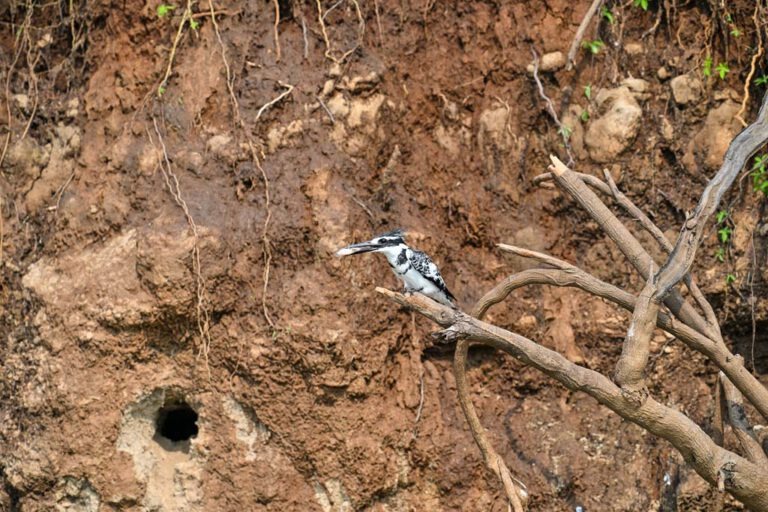
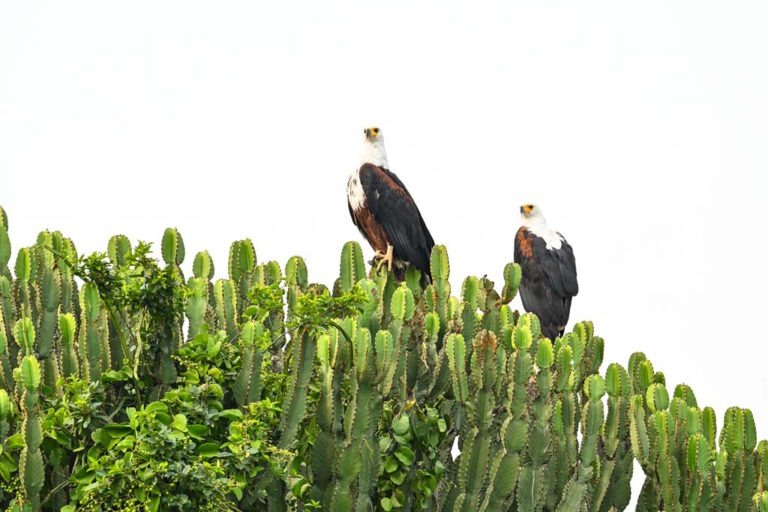
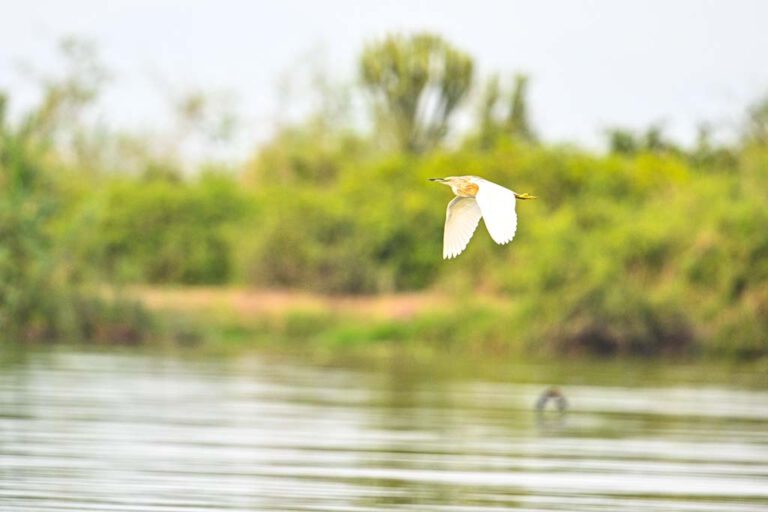
Game Drive highlights incl. Sundowner
Whether by boat or car, all game drives at this camp are outstanding. For us, the highlights were definitely the swimming elephants, the large number of hippos that have found paradise on earth here, and, speaking of paradise, the crater lake. Another highlight was the sundowner right on one of the riverbanks.
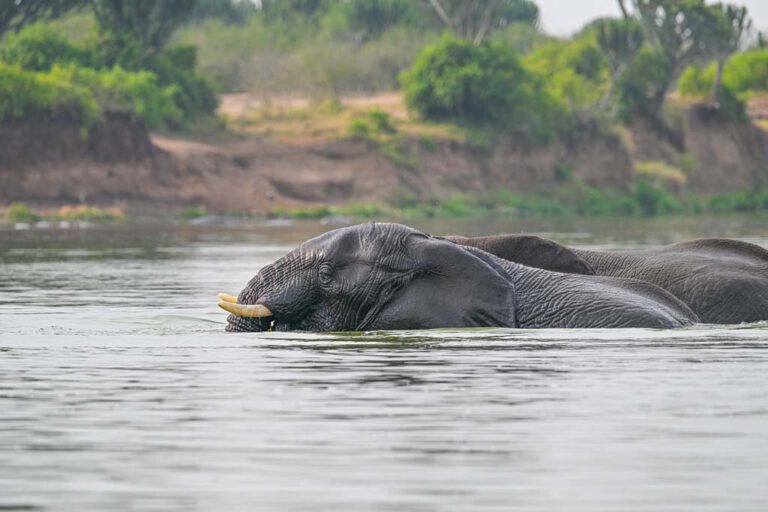
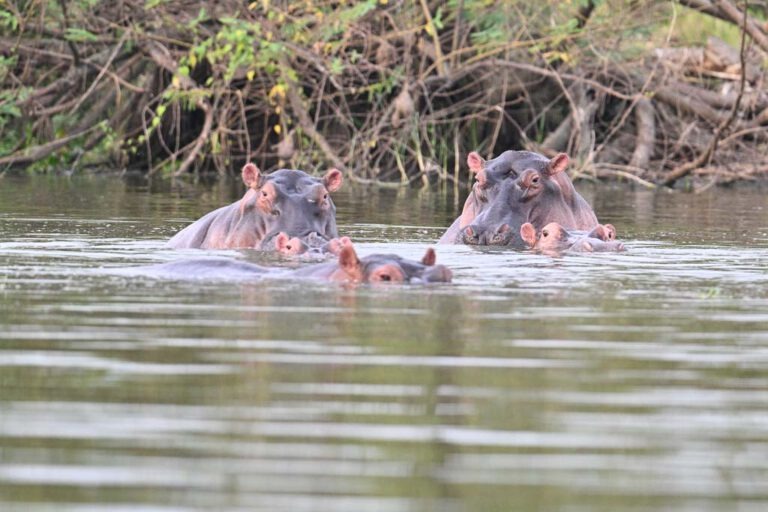
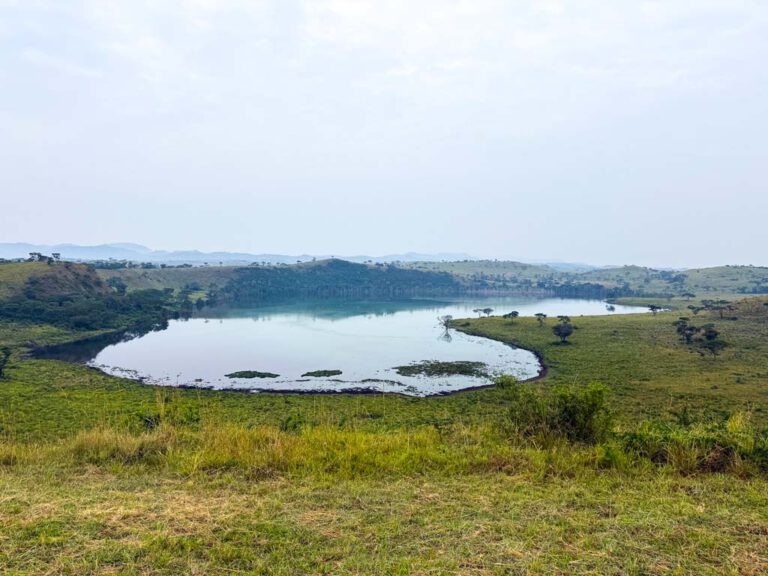
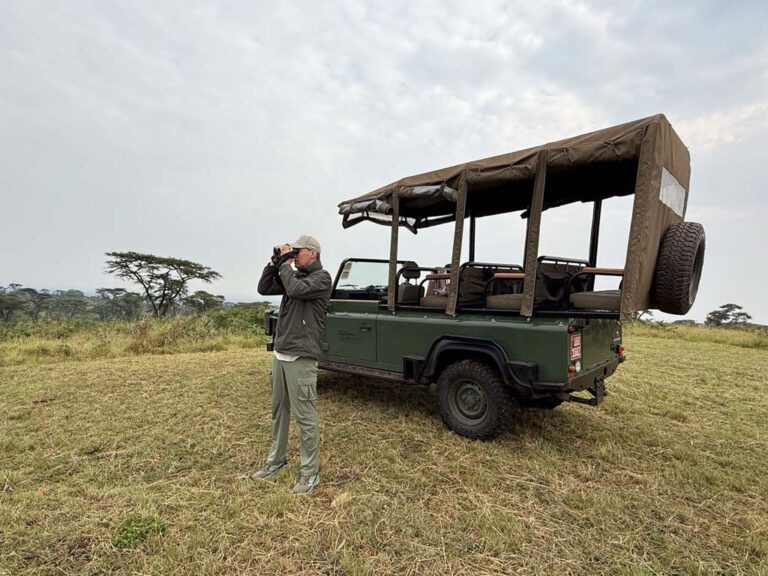
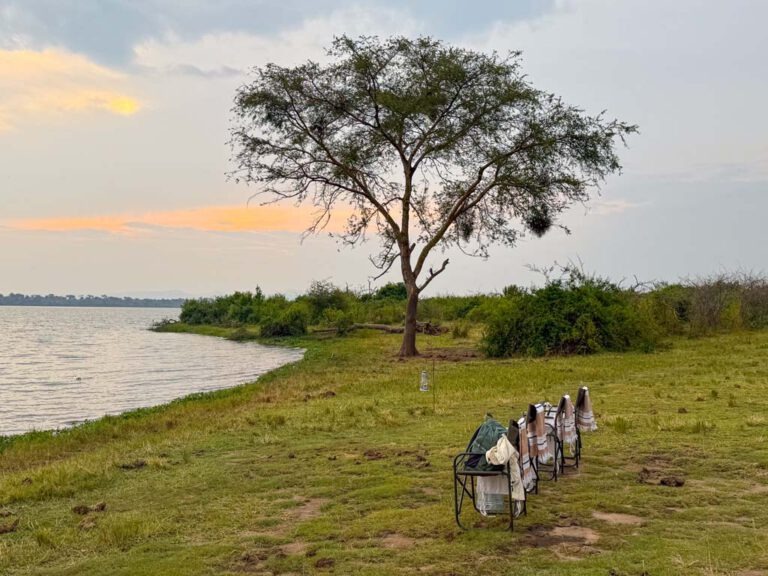
Onward flight from Kasese to Kisoro for gorilla trekking in Bwindi Impenetrable Forest
First of all, for those who don’t know whether it’s called gorilla trekking or tracking, both are OK. Guests and visitors “trek,” but the guides “track.”
Our last stop on this trip is Bwindi Impenetrable Forest, also known as Bwindi National Forest, where you can go gorilla trekking to see the last 1,000 mountain gorillas on the planet.
Bwindi is located in the far south-west of Uganda and is famous for its gorillas. Bwindi is also known as the “Border Triangle” because it is where Uganda, Rwanda, and Congo meet.
This time, we fly in a 12-seater Cessna with other guests, and the flight takes about 1 hour.
Kaara Gorilla Mountain Lodge in Bwindi Impenetrable Forest
Normally, the drive to the lodge from Kasese Airstrip takes a good hour. However, our driver George did not know this route, or rather was not sure whether the road was clear, and took the 3-hour route. Scenically beautiful, but really very long.
We chose Kaara Lodge because it was only built in 2024 and is very close to the entrance gate for gorilla trekking.
The drive to the lodge is adventurous, as it is continuously uphill on muddy clay roads, and just when you think you can’t go any further, it goes on and on. The lodge is located on a ridge and offers spectacular views of the rainforest.
Loud drums are beaten to welcome each individual vehicle that arrives at the lodge, and after hours of driving past relatively poor villages, the gate opens to reveal the modern world once again. The lodge has six suites and can accommodate a maximum of twelve guests.
Kaara Gorilla Mountain Lodge - the Suites
All suites are laid out in the same way, with a small living room and an adjoining bathroom, as well as a balcony offering a fantastic view of the jungle. Thanks to the high altitude, you can enjoy a wonderful view down into the valley.
There are enough power outlets in the rooms so that you can charge everything, even with European plugs. If you want to take a shower, you have to turn on the boiler 5 minutes beforehand, but that’s no problem either. The tap water is not drinkable, but the lodge provides you with sufficient drinking water every day.
Kaara Gorilla Mountain Lodge - the main house
The main house towers high above the suites and is very spacious and functionally furnished. The highlight is the veranda, where you can enjoy your breakfast or coffee or tea while enjoying an even better view of the valley than from the suites.
If it gets cold, as you are at an altitude of over 2000 m, there is a large fireplace that is used regularly, as the weather in this region can change from hour to hour. In contrast to the rest of Uganda, it can get quite chilly in the mountains at an altitude of over 2000 m. Above all, however, it is very humid, which you can tell from your clothes and towels, which are always a little damp.
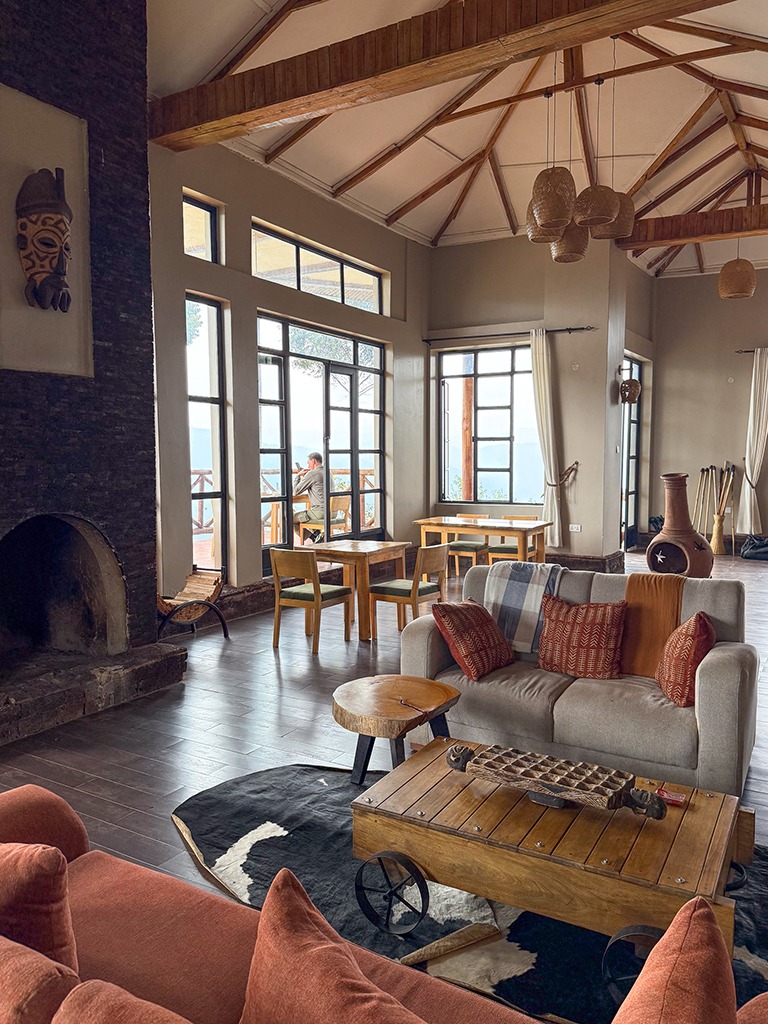
Kaara Gorilla Mountain Lodge - Food and Service
The food at Kaara Lodge is really good and very tasty. The dishes are simple and delicious, and everything from breakfast to dinner is really great.
Wilfried is the manager of this lodge and an incredibly warm person who ensures that your stay is an unforgettable experience. At first, when he introduced us to the evening entertainment, which is essentially a dance group, we were a little skeptical, but this dance group is really great, and no one should miss it.
Gorilla trekking to see the last mountain gorillas in the world
The day starts at 7:00 a.m. with breakfast, followed immediately by gorilla trekking. The driver takes you to the starting point, where you are divided into different groups after an approximately one-hour briefing with another dance group performance. We decided to join a group where we wouldn’t have to walk so far. (You have to ask the guide if this is possible, and if you have a good guide, they will make it happen). Our guide George made it possible, but it’s fair to say that it still ended up being a five-hour tour.
Proper preparation is important. You should definitely remember to bring good gloves, because many shrubs and bushes have thorns or needles, and you never know exactly where you will be grabbing hold of something or where you will need to hold on while climbing, so these gloves are simply a must. We also wore gaiters over our pants, which is also recommended, not only for protection against the many prickly and thorny bushes and shrubs that grow close to the ground, but also against bites and stings from insects, such as the fire ants that are very common here and whose bite is very painful. The lodge also provides walking sticks made of very light wood. For your information, hiking poles as used in Europe are not suitable here!
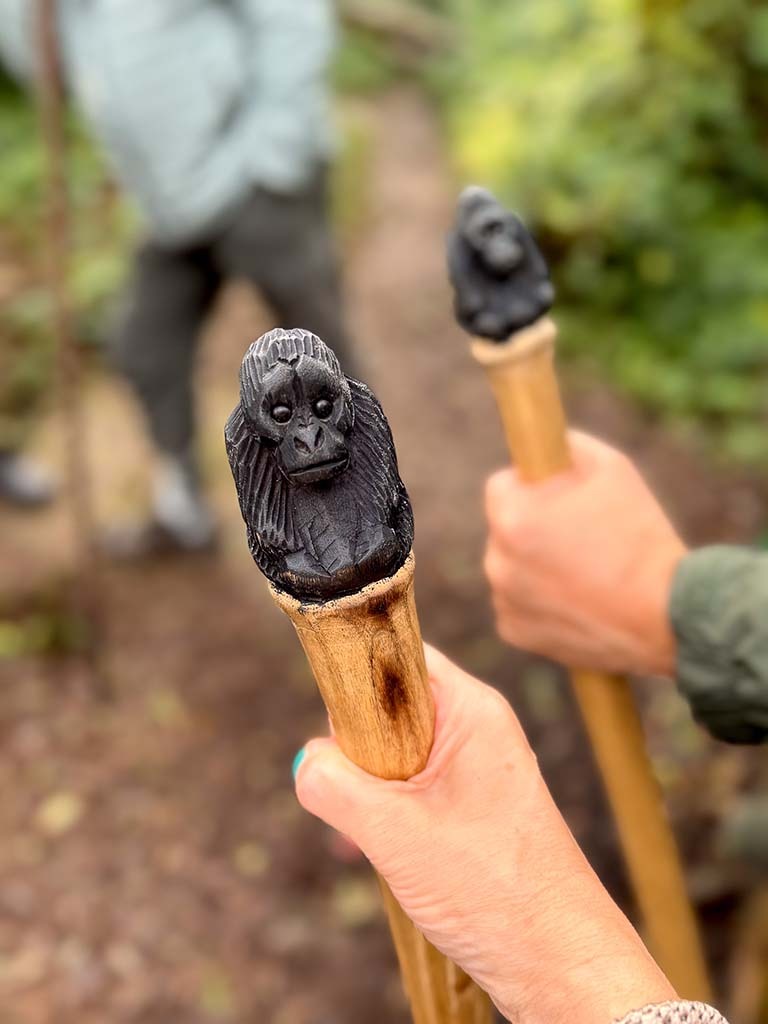
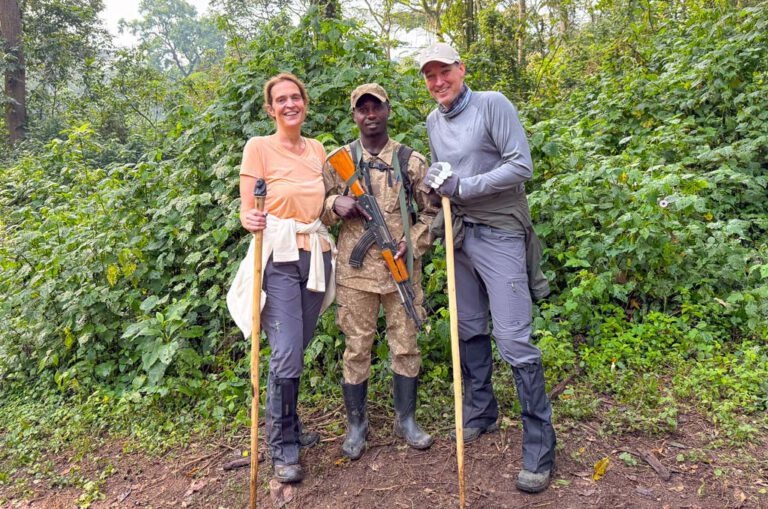
Each group consists of eight participants, a guide, and a security guard armed with a Kalashnikov in case they encounter forest elephants. However, the idea is not to shoot these animals, but to scare them away with the shots. According to reports, this has happened very rarely so far.
Depending on where the gorillas are, as they are constantly on the move, it can be a very strenuous ordeal. Especially when it is hot and humid. Good footwear, preferably hiking boots, ankle-high, is really an advantage, as you sometimes have to walk through mud, muddy rivers, and other difficult passages.
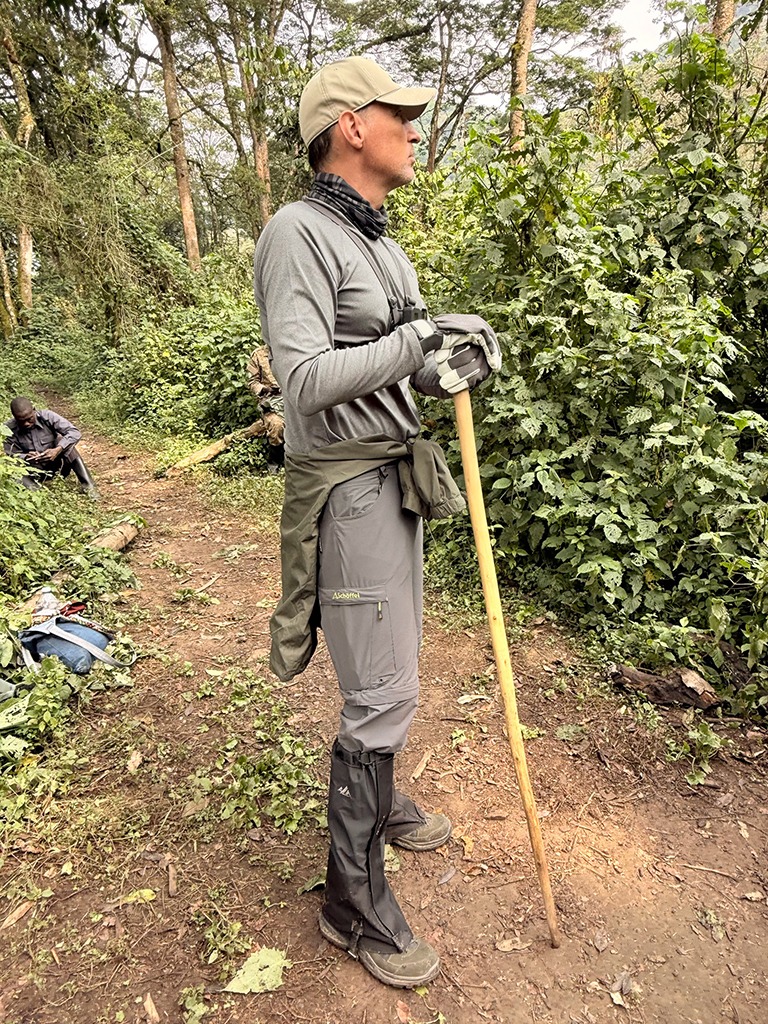
Why it's a good idea to hire a porter
We climbed down some mountain slopes where you always wondered whether you would actually make it to the bottom in one piece. And you always had to keep in mind that you would have to climb back up these sections again.
For this reason, you should consider hiring a porter. They carry your backpack for you and help you over the difficult passages. It also supports the community. It costs around $20, and we decided to hire two porters. There was only one other couple in our group who hired a porter. The three of us were the only ones who didn’t fall or slip on the trail because our porters always helped us. We would definitely recommend this, also because it helps the local people a lot. The porters are only allowed to do this work twice a month per person, so everyone in the village has the chance to earn some money.
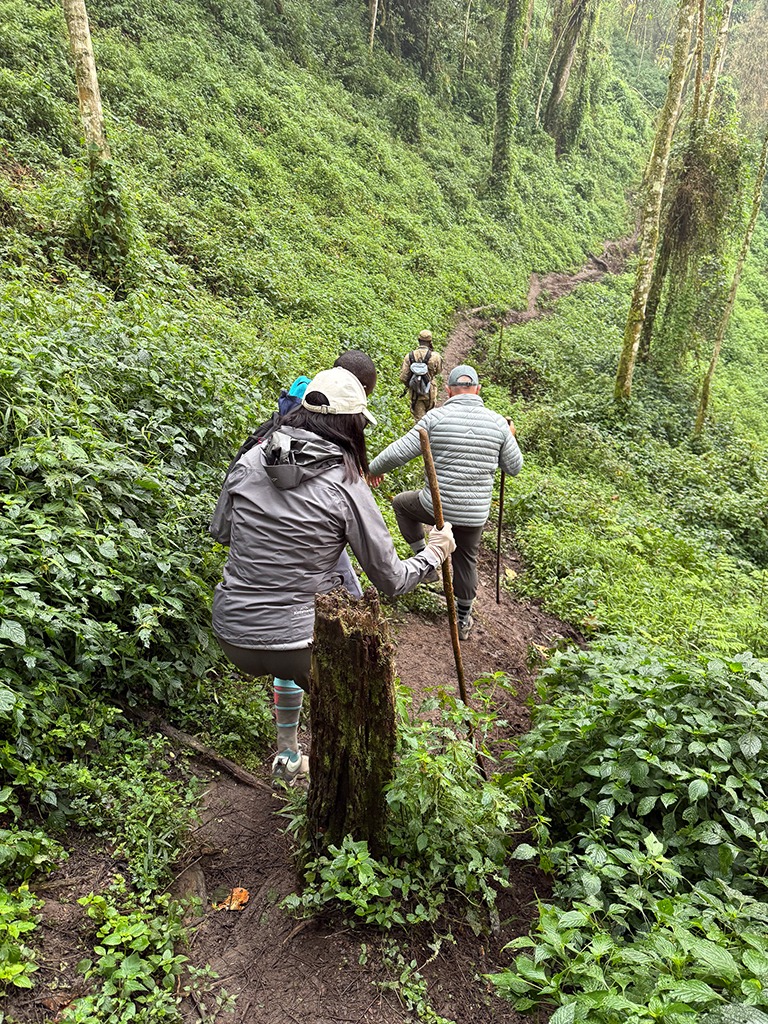
60 minutes with the last mountain gorillas
The time you get to spend with the gorillas, once you finally find them, is limited to one hour, and that hour goes by really quickly. You actually feel like you weren’t even there.
Taking photos or videos can be extremely difficult, as you are in the middle of the jungle and there are always leaves or trees in the way, preventing you from seeing the animals. So when you are lucky enough to finally see an animal without any leaves or branches in the way, it is a very special experience.
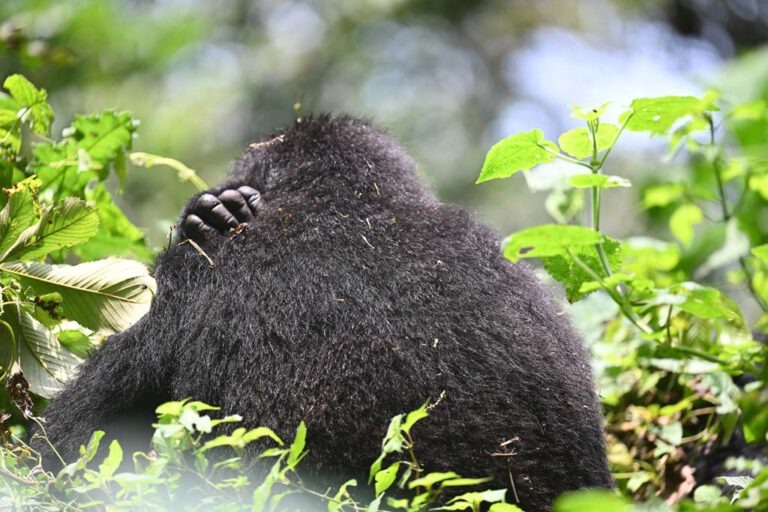
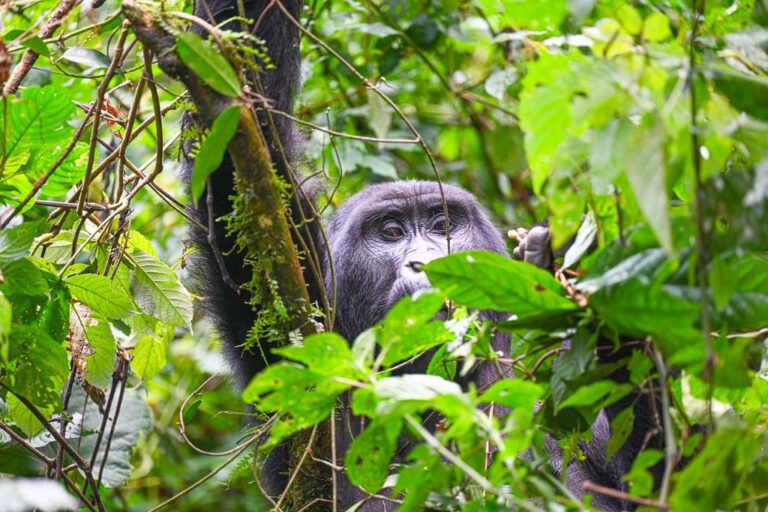
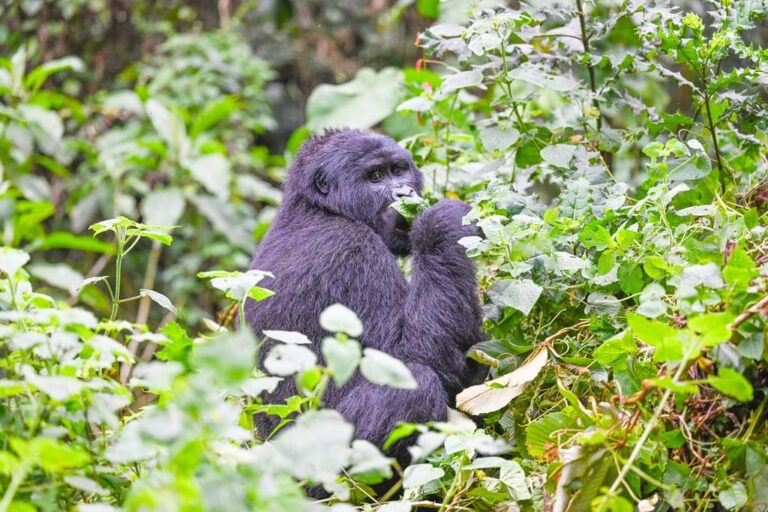
The way back from the mountain gorillas
In our case, we were lucky that the return journey was significantly shorter than the outward journey, as the animals had moved towards the starting point. And the path was also better at the end.
Although we were really well prepared in terms of clothing, it has to be said that the effort was extreme and we were completely drenched in sweat on our return, which was due to the high humidity on the one hand, but also to the effort itself.
The lodge provides you with sufficient water and a packed lunch. You should have at least one to two bottles per person with you.
At the end, we were even lucky enough to have a cold beer and a glass of wine with a couple from Australia and their guide (Lioness). It was a really great and successful end to the trip.
At the end, we gave our gloves to our porters as a gift, and they were visibly delighted, because unfortunately, hardly any of the $800 ticket fees per person to see the gorillas in Uganda stay with the local population.
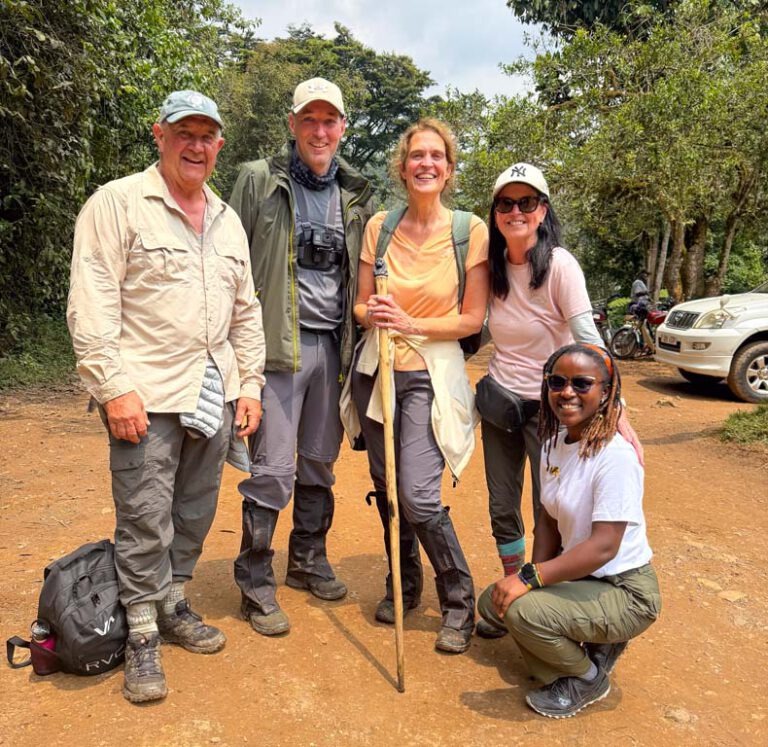
Cleaning Service at Kaara Mountain Gorilla Lodge
Back at the lodge, you look forward to a hot shower like a little kid.
The lodge offers a cleaning service for shoes and gaiters, so that you get them back sparkling clean the next day. Our trek started at 9:00 a.m. and we were back at the lodge at 3:00 p.m. Of that, a good 5 hours were pure gorilla trekking time.
After a shower at the lodge, you can relax on the terrace, watch the fog over the mountains, and enjoy a nice warm cup of coffee, which you’ll also be looking forward to.
Leaving for Entebbe
From Kisoro, we fly back to Entebbe, where we will spend the last few hours of our trip to Uganda. We have rented a “day room” in a small hotel so that we can rest a little and have a good meal between our arrival in Entebbe at around 1 p.m. and our departure at 11:30 p.m. We even visited the botanical garden.
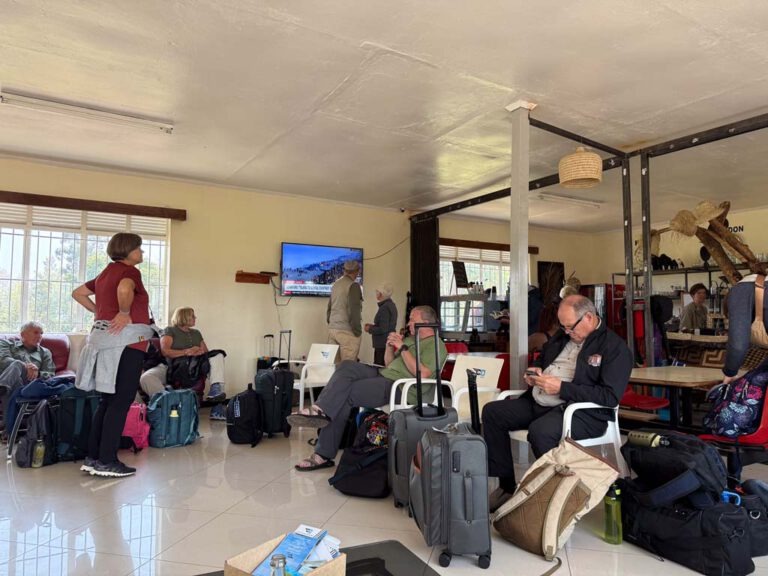
Conclusion 7-day flying safari Uganda
Uganda is certainly still one of the last great African adventures, at least when it comes to safe African vacation destinations. The country is still in its infancy in terms of tourism, but that is changing. As a result, lodges and hotels that meet European standards are extremely expensive, and you pay significantly more for less than you would in South Africa, for example. At the same time, Uganda is still very quiet and you are often alone or with only a few other guests in the lodges, with the exception of gorilla trekking, which is extremely touristy. The wildlife sightings in Uganda are excellent and you can see many things that you would not see in southern Africa. At the same time, the contrast between the very poor population and the “rich” tourists is noticeable everywhere. But what really impressed us was the warmth and positivity of the people. That was something very special, and so it’s no wonder that it’s what stuck in our minds the most. If you’ve never been to Uganda, you should hurry, because the country is developing rapidly and is definitely worth a visit, not only because of the gorillas.
Want to order a calendar from our photo trip?
What photography equipment to take to Uganda?
The photographic equipment we took with us is listed below. You can also order the photographic equipment we used directly from our Photo-Shop and request further technical details. There are also lots of extras available there.
Cameras:
- Z8 (Nikon)
- Z7ii (Nikon)
- Iphone
- Go Pro Hero 8
Lenses:
- Z 70-200mm f/2.8 (Nikon)
- Z 400mm f4.5 (Nikon)
Tripod:
- Go Pro Body Holster
- GorillaPod
Lowepro Runner 450 (Backpack)
